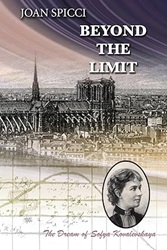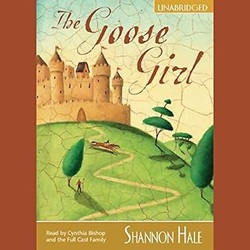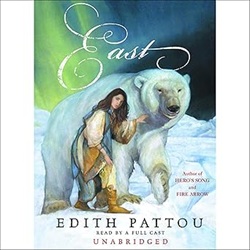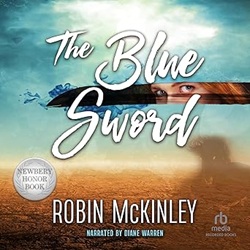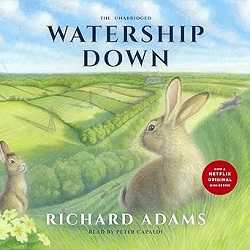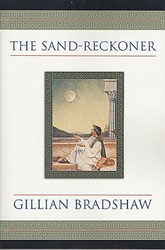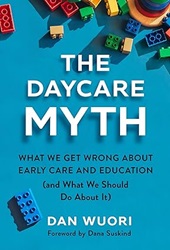 I’m celebrating my 25th year of writing Sonderbooks with #Sonderbooks25!
I’m celebrating my 25th year of writing Sonderbooks with #Sonderbooks25!
Tonight I’ll be looking back at my Sonderbooks Stand-outs from 2002.
Now, I confess that when I announced my #Sonderbooks25 project, I expected to post every couple weeks, not every few months. So let me start with some excuses.
First, my original plan was to simply read the reviews of the Stand-outs for each year and choose one book to reread and reflect on that every couple of weeks. I knew the first five years, 2001-2005, would take a little longer, because I also planned to reformat the Stand-outs pages.
What I didn’t realize was that once I’d gotten started, I’d want to reread every review I’d written during the year in question. For 2002, that was before the blog when I was still producing numbered issues, and covers Sonderbooks #19 through Sonderbooks #44. You can find all the Back Issues on the Back Issues Index page. Reading all of them, I think I did a good job picking out Stand-outs, as those are indeed the books I most want to revisit. But that wasn’t even enough for me. I also reread the posts from Project 52 from the year I was 37 and the year I was 38.
So I do have reasons to take a long time between posts. And it turns out, though my 2025 Sonderbooks Stand-outs page will be my 25th list of Stand-outs, I won’t hit the actual 25th birthday of Sonderbooks until August 1st, 2026. So there’s not really a big rush. All that said, it took me an especially long time to post about the 2002 Sonderbooks Stand-outs because of two additional complications.
1) I was writing a weekly blog series over on Sonderjourneys called “Laments for Lent.” It turns out that doing significant blogging more than once a week is tricky, especially because:
2) I broke my left pinky finger seven weeks ago, and it hurt to use my left hand at all for a few weeks, and that seriously slowed down my typing. (I finally see the doctor next Monday and hope to stop buddy-taping it. But I predict it will still be a while before my typing’s back up to speed.)
Okay, that’s probably enough excuses! Tonight I updated the links and my new version of my 2002 Sonderbooks Stand-outs is live.
Let me talk about the books in the order they appear on the original page.
From Young Adult and Children’s Fantasy, the stand-out of the Stand-outs is This Star Shall Abide, by Sylvia Louise Engdahl. Another that stands out is Heir Apparent, by Vivian Vande Velde, which I bought for my kids and both of them (or at least the younger?) enjoyed. The rest were all very good, but don’t make me quite as nostalgic. Though I’d reread them all if I could find the time (and if I weren’t trying to move on to books reviewed in 2003).
Among the Young Adult and Children’s Fantasy Rereads, The Blue Sword, by Robin McKinley, is still quite possibly my all-time favorite book (though it’s so hard to narrow it down to one!). I have reread it many times, though, so I didn’t feel as compelled to make it my one Reread for 2002 – though, Ha! I checked just now and my library has it in eaudiobook form, so I just placed a hold.
The Harry Potter books are Alas! tainted by the fact that their author has revealed herself to be a transphobic bigot. But the other in that category, Ella Enchanted, by Gail Carson Levine, is completely delightful, and – Oh look! We’ve got that in eaudiobook form, too.
For Young Adult Historical Fiction, I don’t remember any of the three titles distinctly, except to be sure I’d enjoy rereading them. And as for the “Rereads” – The True Confessions of Charlotte Doyle, by Avi, is among my all-time favorites, and I’ve reread it many times. (Oh look! That one’s on eaudio, too!) As for Treasure Island – we read it aloud to our kids, as an elementary school teacher once did for me, I’m quite sure (but don’t remember which one).
My Young Adult Contemporary Novel choices were solid choices, but The Sisterhood of the Traveling Pants is the one I’d most like to reread. (And its eaudio version is available without a wait.)
As for the Young Adult and Children’s Classic Rereads, well, I did a project (unfinished) to reread all of L. M. Montgomery’s books in 2019 before an incredible visit to her home in Prince Edward Island.
Probably my favorite review I’ve written – at least my favorite of the ones I’ve revisited – is my “Reflections on Winnie-the-Pooh,” about how that book has been an important part of my life for decades.
In Children’s Nonfiction, which you’ll notice isn’t my favorite category, I still believe that Greg Tang’s The Best of Times is a vital resource for teaching kids to think about how multiplication works, beyond just memorizing facts. It’s still in print, and I recently ordered fresh copies for our library system.
In Fiction for Grown-ups, the top two are two of my favorite authors. I read The Sand-Reckoner, by Gillian Bradshaw, for my 2001 Revisit, so I’m going to hold off on rereading Cleopatra’s Heir. And Quentins, by Maeve Binchy, is another one I’m now wanting to revisit.
To this day, the title Five Quarters of the Orange, by Joanne Harris, makes me think of driving through the French countryside to Paris (when I was reading it) and the amazing chocolate shop we found there. Okay, the review says I read Chocolat on that particular trip. But anyway, Joanne Harris transports me to France.
All the Fiction Rereads are All-Time Favorites, and it was Caravan that I chose as the one book to revisit from 2002 – with a bit of disappointment I’m afraid. The other three are, you guessed it, available as eaudiobooks, and I’ve already started in on Watership Down.
For Biographical Nonfiction, again it’s the top two that I would dearly love to reread (I own both) – Angles of Reflection, by Joan Richards, and In Code, by Sarah Flannery. The rest were good, but the one I’d be most interested in rereading from those is #7, Bringing Down the House, by Ben Mezrich.
But the Biographical Reread? Oh, I need to pick up Life Among the Savages, by Shirley Jackson, (which I own) to give myself some good hard laughs and a renewed outlook.
In Other Nonfiction, Barbara Kingsolver is always good, but I’d probably rather reread her fiction. If I still had kids in my home, A Mind at a Time, by Mel Levine, feels vital. And this project reminded me to pull out my copy of Storybook Travels and now look for sites in America instead of in Europe.
The Other Nonfiction Rereads are all beloved Christian books I’ve read multiple times since writing these reviews. You may have noticed there are a lot of Rereads included? Back when I was doing ezine issues of Sonderbooks, in 2002, I started including an “Old Favorite” with every issue – so I was rereading a beloved book every couple weeks, something I don’t have the luxury to do now that I’m working full-time and reading for award committees. As I was starting Sonderbooks, I wanted to include my all-time favorites, so that gave my reviews a nice foundation.
And that brings us to New Picture Books. I chose these before I was a children’s librarian, and honestly probably the only one today that would still make my list is Hungry Hen – I’m a sucker for picture books where someone bad gets eaten. Or, well, where anyone gets eaten. I was able to find all the books in Fairfax County Public Library (and enjoyed them) except for Elephant elephant, which was a very quirky French import.
So there you have it – My thoughts on revisiting my 2002 Sonderbooks Stand-outs. I hope you’ve found or been reminded of a book to enjoy. They are all well-worth your time.
I’ve already decided on the book to revisit from my 2003 Sonderbooks Stand-outs – Beyond the Limit, by Joan Spicci. But I’ve also put a few of the others in my eaudiobook holds queue. I hope you’ll hear about them in only a few weeks this time, rather than a few months. Until then, Happy Reading!
 I did it! I revised my 2003 Sonderbooks Stand-outs to a phone-friendly format!
I did it! I revised my 2003 Sonderbooks Stand-outs to a phone-friendly format!